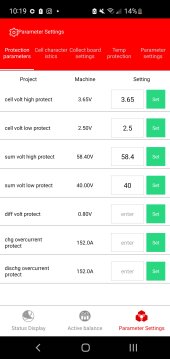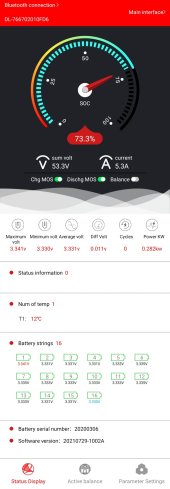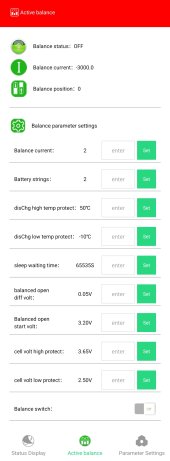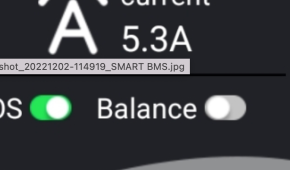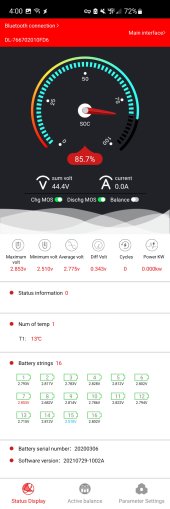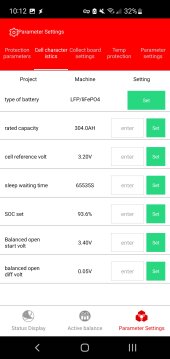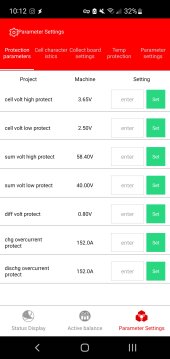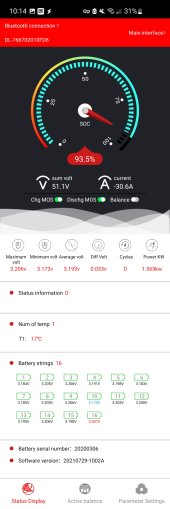Your Balance Open Volt of .05v may be the same thing on my BMS that I believe is called Balance Differential. Mine is set to .015. Consequently, my BMS will initiate balancing when A) cells are over 3.4 volts and B) the differential between cells is greater than or equal to .015 volts.
Your setting would prevent balancing when the cells are at a larger differential value, up to .05 volts. In your latest discharge, the cells may not have balanced, so while the battery may have been at 100% state of charge, the cell could have been at a large difference.
We top balance with the expectation that the cells/battery will spend more time close to 100% state of charge than 0%.



